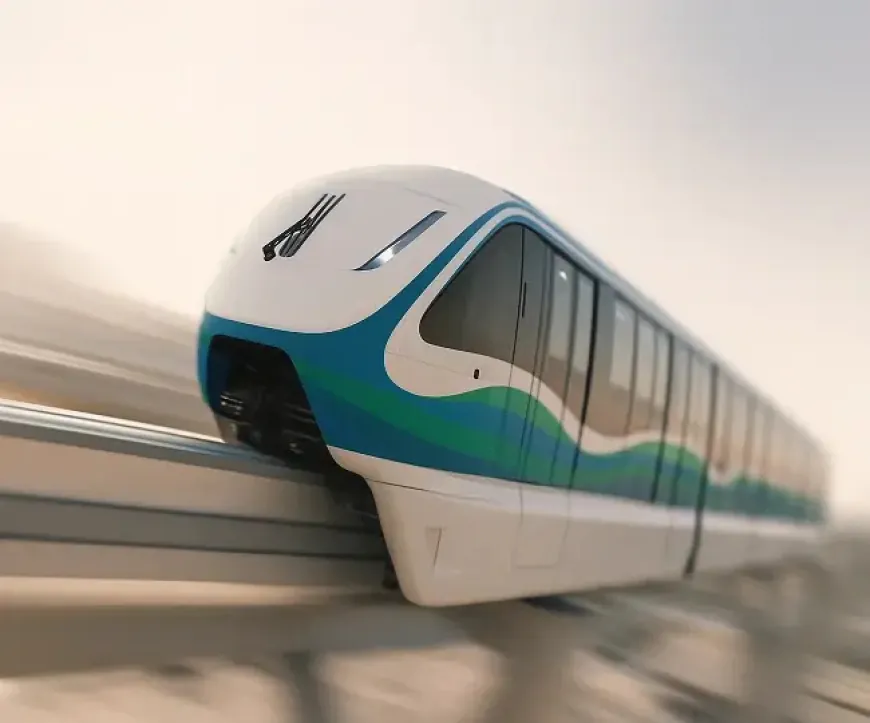Santo Domingo Monorail: 10.5km, 306,000 Passengers/Day
Dominican Republic launches tender for 10.5km Santo Domingo monorail. 306,000 passengers/day, 12 stations, October 23 deadline. Second DR monorail.

The Dominican Republic is advancing its public transport network with the launch of an international tender for the construction of a 10.5-kilometer monorail in Santo Domingo. Led by Fitram, the government agency responsible for mass transit, the project includes 12 stations and a capacity of 306,000 passengers per day, with a submission deadline set for October 23, 2025. This will be the country's second monorail after Santiago de los Caballeros, currently nearing completion.
Updated on October 3, 2025
A Strategic Tender to Ease Capital Congestion
The tender published by the Trust for the Development of the Dominican Republic's Mass Transport System (Fitram) covers engineering design, civil works, and related systems for the first phase of the Santo Domingo monorail . Bids must be submitted physically at Fitram headquarters by October 23, 2025.
The project aims to reduce road congestion in a capital city serving a direct catchment area of over one million residents. Announced by President Luis Abinader on August 29, 2025, the monorail is part of the Santo Domingo Integrated Transport System (SIT-SD) , a multimodal strategy combining metro, monorail, and cable cars to shift over one million daily trips from private vehicles to public transport.
Phase 1: A 10.5-Kilometer Route Connecting East to Center
A Structural Corridor with Metro Interchanges
The first phase will span 10.5 kilometers between Charles de Gaulle Avenue (at King Juan Carlos Bridge in Santo Domingo Este) and the Olympic Centre in the National District, featuring 12 stations. The route will follow major arteries including Las Américas Highway and 27 de Febrero Avenue offering interchanges with metro lines 1 and 2 at the Olympic Centre.
Scalable Capacity: From 12,500 to 34,160 Passengers Per Hour
The monorail will serve a catchment area of more than one million residents and carry 306,000 daily passengers according to Fitram forecasts. Initial peak-hour capacity will reach 12,500 passengers per hour per direction (PHPD).
The system will initially operate with four-car trains carrying 562 passengers each, providing a maximum capacity of 22,480 PHPD at 90-second headways. However, the infrastructure is designed to accommodate six-car trains in the future, raising theoretical capacity to 34,160 PHPD to anticipate demand growth.
Integration into the SIT-SD Network: Extensions and Multimodal Vision
Future Phases: Pintura and Los Alcarrizos
Subsequent project phases envision a westward extension to Pintura, where the monorail will connect to cable car line 3 of the SIT-SD network. Another branch will reach the Duarte Highway to provide interchange with metro line 2C at Los Alcarrizos, expanding coverage to western suburbs [to be verified: timeline and budget not official].
The SIT-SD Ambition
The Santo Domingo Integrated Transport System aims to create a cohesive network combining metro (lines 1, 2, and extensions), monorail, and cable cars. The Dominican government's stated goal is to shift over one million daily trips from private cars to public transport, thereby reducing congestion, air pollution, and travel times.
The Santiago Precedent: Caribbean's First Monorail
A Pilot Project Nearing Completion
The Dominican Republic is currently completing its first monorail in Santiago de los Caballeros, with completion scheduled for late 2025. Spanning 13 kilometers, the automated line features 14 stations and connects the northwest and southeast districts of Santiago, the country's second-largest city with approximately 590,000 inhabitants.
Alstom's Innovia 300 Technology
The Santiago project was awarded to a consortium led by Alstom, which is supplying 13 four-car automated Innovia 300 trains. This system incorporates fully automated operation (driverless), bidirectional operation, and compliance with international standards for high-capacity urban transport. Construction, launched in March 2022, is financed by national bank Banreservas.
| Project | Length | Stations | Daily Capacity | Technology | Status |
|---|---|---|---|---|---|
| Santiago | 13 km | 14 | [to be verified] | Innovia 300 Alstom, automated | Delivery late 2025 |
| Santo Domingo | 10.5 km (phase 1) | 12 | 306,000 passengers | [to be verified: tender ongoing] | Tender Oct. 2025 |
Context and Stakes
Santo Domingo, the capital and economic center of the Dominican Republic, suffers from chronic congestion linked to rapid urbanization and dependence on private vehicles. The existing metro network (lines 1 and 2, inaugurated between 2009 and 2018) has demonstrated the potential of guided transport to absorb part of the traffic flows, but east-west and north-south corridors remain saturated.
The monorail project is part of a government strategy launched between 2021 and 2022, combining heavy rail infrastructure and aerial systems (cable cars) to create multimodal coverage. The Dominican Republic is thus becoming a regional laboratory for mass transport technologies in the Caribbean, having pioneered metro systems (first line in 2009) and now automated monorail.
Financially, the funding model for the Santo Domingo monorail has not yet been officially disclosed [to be verified]. The Santiago precedent, financed by public bank Banreservas, suggests a national financing scheme, possibly supplemented by multilateral loans (World Bank, IDB) and public-private partnerships (PPP) for operation.


 TrainsNews
TrainsNews 





